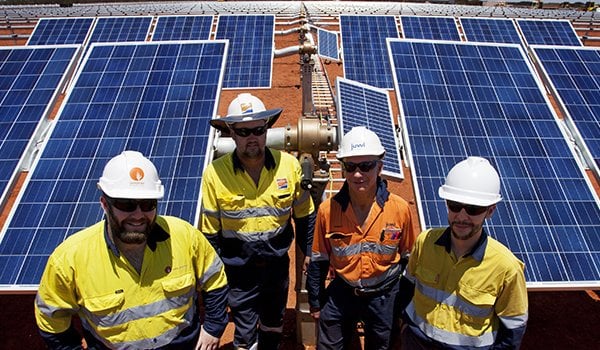
Australia could stand on the cusp of a boom of skilled green energy jobs across left-behind rural areas if it embraces renewables post-pandemic, according to the Clean Energy Council (CEC), which is Australia's renewable energy association.
Renewables employ today 25,000 Australians and could nearly double the headcount within five years if the government supports the shift, the trade association said as it published what it described as the “first ever national study of the Australia’s renewable energy workforce”.
Try Premium for just $1
- Full premium access for the first month at only $1
- Converts to an annual rate after 30 days unless cancelled
- Cancel anytime during the trial period
Premium Benefits
- Expert industry analysis and interviews
- Digital access to PV Tech Power journal
- Exclusive event discounts
Or get the full Premium subscription right away
Or continue reading this article for free
At 14,600 staff or 56% of all 25,000 jobs, Australian solar sector dominates the present workforce (see table below), with small-scale solar a bigger employer (9,700 staff) than the large-scale solar (3,400) and solar water heating (1,500) sectors.
According to the CEC, the current 25,000 job count across all renewable technologies could peak at 46,000 in 2021 – and again in 2035 – under a so-called High Distributed Energy Resources scenario, where consumers keen on rooftop PV, home batteries and electric cars would steer the shift.
The government’s role in unlocking jobs in the post-COVID years is “essential”, the CEC said. If renewables are not backed by new policies at the federal and state level, the green energy workforce would number 35,000 people in 2035, a full 11,000 below of what is otherwise possible.
If it sponsors green energy, Australia would be backing a sector where 70% of workers will be based in rural and regional areas by 2035, the CEC argued. According to CEO Kane Thornton, the country has a chance to reverse its “two-speed economy” and deliver benefits to “all Australians”.
Australia’s current renewable workforce, at a glance
| Segment | Headcount (%) |
|---|---|
| Solar | 14,600 (56%) |
| Wind | 7,200 (28%) |
| Hydro and pumped hydro | 2,500 (10%) |
| Storage batteries | 1,700 (6%) |
Source: Clean Energy Council’s Clean Energy At Work report.
Rise of ‘highly skilled’ O&M jobs in country of climate rows
The calls for Australia to seize its renewable potential have been apparent for some time. As the country’s own energy regulator AEMO has noted, the country is ready for a 75% solar and wind share by 2025 if it enacts reforms to solve the current grid imbalances.
Whether federal policymakers will heed the calls remains unknown. Already pre-pandemic, the cabinet of prime minister Scott Morrison had been engulfed by rows over supposed climate skepticism in the government, particularly in the wake of deadly bushfires in late 2019.
Post-COVID moves have so far been mixed. Where Europe is betting on renewables as a recovery pillar – and New South Wales and other states are following suit – Morrison’s government is said by Reuters to be working on plans for a response driven by “cleaner burning gas”.
Should Australia step in to boost renewable jobs, it could find the workforce profile is set to change in the coming years, the CEC said. The current dominance of builders and installers (72% of all jobs) may give way to a rise of O&M to account for half of the overall workforce by 2035.
The rise of O&M workers may reward Australia with “ongoing, highly skilled and stable” jobs, CEO Thornton said, contrasting this with the “boom and bust of construction cycles”. Training, the CEC believes, will be key to plugging shortages of sought-after roles such as electricians.
Based on the analysis, a different technology mix lies also in the cards. Where solar will vastly dominate the green energy workforce in the short term, it could evolve to become one of three salient segments by 2035, alongside large-scale storage batteries and wind.






